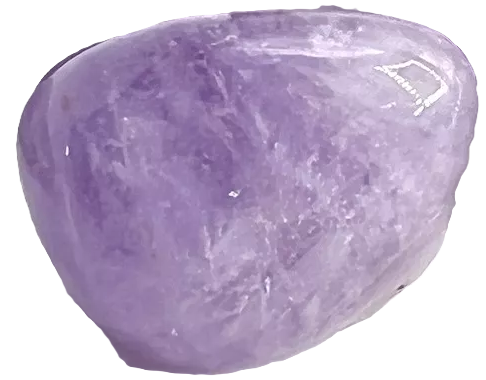
Lavender Amethyst, a delicate and captivating gemstone, is a variety of amethyst known for its lighter, softer hue, ranging from pale lilac to a more pronounced lavender. This gentle coloration distinguishes it from the deeper purple of traditional amethyst, giving it a unique appeal and association with tranquillity.
Origins and Formation
Lavender Amethyst, like all amethyst, is a variety of quartz, a silicon dioxide mineral. Its distinctive purple colour comes from the presence of iron impurities within the quartz crystal structure, which are then naturally irradiated. The lighter shade of lavender amethyst is believed to be due to a lower concentration of iron or several types of impurities present during its formation.
Amethyst, including the lavender variety, is found in various locations around the world. Significant deposits are found in Brazil, Uruguay, Zambia, Namibia, and Madagascar. The specific geological conditions in each location can influence the colour and quality of the amethyst crystals.
The name “Lavender Amethyst” is a descriptive term, clearly referencing its light purple colour. The name “amethyst” itself comes from the Greek word “amethystos,” meaning “non-intoxicated,” reflecting the ancient belief that amethyst could prevent drunkenness.
Archaeological Finds and Historical Records
Amethyst, in general, has a long and rich history of use, dating back to ancient civilisations. Archaeological evidence shows that amethyst was used for jewellery, carvings, and amulets in ancient Egypt, Greece, and Rome. However, specific references to “Lavender Amethyst” are less common, likely because it is considered a variety within the broader category of amethyst.
Amethyst was highly valued in antiquity. It was mentioned in the Bible and was considered one of the most precious gemstones for centuries. Its association with sobriety and spiritual purity made it a popular choice for religious and royal adornments.
Lavender Amethyst folklore, Legends, and Tales
Amethyst has been associated with various myths and legends throughout history. In Greek mythology, amethyst was linked to the god Dionysus. One legend tells of the nymph Amethyst, who was transformed into a quartz crystal by the goddess Diana to protect her from Dionysus’s drunken advances.
Lavender Amethyst, with its gentle colour, is often associated with calmness, serenity, and spiritual awakening. It is believed to have a soothing energy that can help to reduce stress and anxiety. Some believe it can enhance intuition and promote spiritual connection.
Lavender Amethyst links with Astrology and the Chakra System
Amethyst is traditionally associated with the planet Neptune and the zodiac signs of Pisces and Aquarius. Neptune is linked to spirituality, intuition, and dreams, while Pisces and Aquarius are associated with compassion, empathy, and spiritual awareness. Lavender Amethyst, with its gentle and calming energy, aligns well with these astrological associations.
In the chakra system, Lavender Amethyst is primarily connected to the crown chakra (Sahasrara). This chakra is located at the top of the head and is associated with spiritual connection, enlightenment, and universal consciousness. Lavender Amethyst can help to open and activate the crown chakra, promoting spiritual growth and connection to higher realms.
It is also sometimes associated with the third eye chakra (Ajna), which is in the centre of the forehead and is associated with intuition, psychic abilities, and inner vision. Lavender Amethyst’s ability to enhance intuition and connect one with the spiritual realm makes it a suitable stone for balancing the third eye chakra. Its calming properties can also be beneficial for the heart chakra (Anahata), promoting emotional balance and peace.
